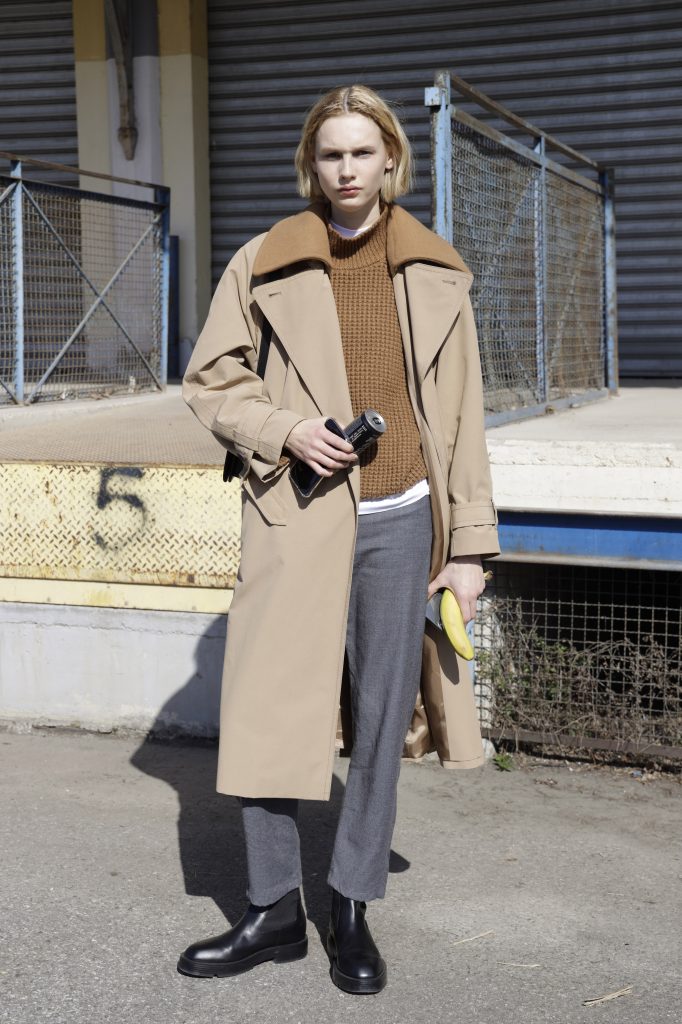
Blurred Lines: Androgyny And The Art Of Genderless Fashion
The grey area between masculine and feminine style is coming into the spotlight and it’s not as niche as you think
Androgyny can be defined as the state of being neither specifically feminine or masculine, or the possession of both feminine and masculine characteristics. Attempting to define a concept like androgyny is an irony in itself, because it’s very essence is fluidity, freedom and rebellion.

Fashion, being the most profound way of self-expression, is naturally the biggest vessel to visibly embody androgyny. Androgynous fashion has been, since it’s beginning, skirting the boundaries of what it means to dress in a masculine or feminine way. The rules of androgynous fashion are simple – there are no rules.

Origin Story
The earliest version of androgyny was born in the early 1900’s out of a need, when the First World War came and took the men with it to the battlefields. With them gone, the women had to step up and step into the workplaces, the factories and the industries where a heavy dress just did not belong. As more and more women began supporting their families in place of the men who had left, the big dresses were discarded and they began wearing trousers.
Eventually, the trouser for women became a symbol of girl power and rebellion when the feminist movement started gaining momentum. The strict dress code for women was just another manifestation of the reigning patriarchy and slipping into a pair of pants became a tool to display open defiance of that.
Coco Chanel’s vision for masculinity in womenswear was evident in the popularisation of the pantsuit, not just through her label but also her personal style. She was seen in trousers more often as the 1920’s came around and gradually the style became a part of the mainstream.
No Time Like The Present
Modern androgyny has evolved much farther than the traditional ideals of a woman dressing in manly clothing or vice-versa. The emergence of gender-fluid or genderless fashion is a testament to that and essentially, androgyny in style and genderless fashion are two sides of the same coin.

The concept of genderless fashion is based on the elimination of gender altogether, rather than one side adopting the style of the other. So, there are no sides. An androgynous wardrobe today could easily be worn by either someone more feminine or masculine.
The Runway and Street Style

Brands like Balenciaga, Helmut Lang, Eckhaus Latta, Rick Owens and Private Policy are putting virtually genderless collections out on the runways, with silhouettes in ready-to-wear ranges that are often made up of soft, rounded edges; loose fabrics that flow and drape in a way that hides the shape of one’s body and unisex basics like straight-cut demin.

Taking several pages from Bella Hadid’s street style lookbook, the comeback of low-rise tent-like trousers, cargo pants and khakis, oversized outer-wear and the occasional pantsuit are signs of a fashion reversal. While models off-duty like Bella and Cara Delevingne are bringing back Y2K, they’re also normalising looking like they shopped in the men’s section.
The Red Carpet – A Love Letter To The Pantsuit
The Kristen Stewart-Chanel love affair that was witnessed by the world on the red carpets this past year screams all types of masculine chic, from her blazers to her bleach-blonde tousled hair. Kristen was named one of the house ambassadors for the label and donned a number of custom pantsuit variations, some with shorts (to the Oscars, no less), some with cropped double-breasted jackets.
While Kristen is a recent addition to the Androgyny-On-The-Red-Carpet Hall Of Fame, fellow actress Tilda Swinton has been doing it for years, having appeared in every cut and design of the pantsuit possible. Honourable mentions go to Ellen DeGeneres and Blake Lively during the promotions for her movie A Simple Favour.
Upsizing And The Streetwear Revolution
Upsizing anything is the easiest way to put a genderless spin on it, which is why the wild popularity of clothes that don’t quite fit right just makes sense. Oversized anything and everything is taking the fashion world by storm and that goes hand-in-hand with the streetwear aesthetic.

The umbrella term of streetwear encompasses activewear, upsizing and sneaker culture, but perhaps the best way to see them put together is Billie Eilish. Usually seen in an oversized sweatshirt or T-shirt, basketball shorts and chunky sneakers, Billie has taken the upsizing to the next level with some out-of-the-box choices, not to mention her love of highlighter-esque neon shades.
An important thing to note is the emergence of sneaker culture. The evolution of footwear into a more gender inclusive avenue of fashion is visible in the unisex nature of sneakers. How previously women strictly wore heels or feminine footwear, now brands are making the exact same design of shoes for women and men.

Androgyny And The Middle East: Local Brands We Love
Precious Trust
Shabab International
Raw Studios
Bougroug
Lead Image Courtesy/ Jason Lloyd Evans
